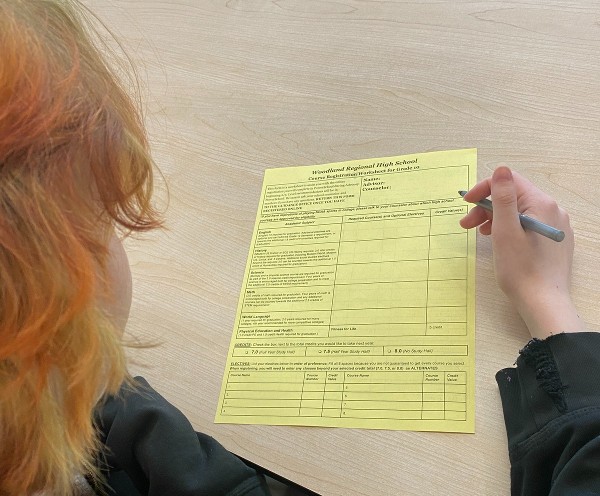The pen is mightier than the sword as twins duke it out for bragging rights and verbal dominance. Fists fly, tempers run wild and insults are hurled like stones. Read the two sides, then log in and voice your opinion. Best responses get published.
| QPA :: Tina Diurno At a young age we are all taught to be hard-working and responsible. Most students apply that in school, and some do not. Well, those who take that initiative should be rewarded, right? At Woodland Regional High School, the students are ranked on primarily Grade Point Averages, or GPAs. The GPAs of any level of a student (AP, Honors, CP, and Core) are valued as if they are the same. The only problem is that they are nowhere near the same because Honors and Advanced Placement students have to work much harder to maintain their grades. The Quality Point Average, or QPA, system indicates a student’s level of achievement. Unlike, GPA’s, the QPA recognizes the higher performance of a student and they are credited for that. An Advanced Placement or Honors student gets ten percent more (1.1) added into their QPA, and a CP or Core student gets 10 percent less (1). The QPA grading system is more that fair for every student. The AP and Honors students should be getting an extra 10% added onto their grades because of the hard work those classes provide. Woodland offers the following AP courses: Psychology, United States History, English Language, English Literature, Statistics, Calculus, Biology, Environmental Science, French, Spanish, Music Theory and Studio Art. With all of these advanced classes there are the students who strive for perfection in their grades. The GPAs are not exactly fair to the AP and Honors students because it is not truly accurate. Yes, it does have the students grade averages out, but the higher level students get no credit for that. Fortunately for these over-achieving students, the QPA is what helps them qualify for scholarships, financial grants and departmental majors because those all want specific grades, and that is exactly what QPAs are, according to Memphis.edu. When ranking a class comes into hand, the QPA in my opinion seems to be more accurate. The GPAs have their take, but the QPA gives the AP and Honors students the extra ten percent that was earned. With that extra percentage, an AP or Honors student’s grade goes up. This is exactly what should happen. The difficulty between and AP Course and an Honors course does not even compare, let alone and AP Course and a CP Course. Therefore, the higher level students should get all the praise that they deserve. The best way to incorporate that is to use the QPA system. The GPA system is a good way to let all of the different levels of students take in their grade, but the QPA system is by far the most accurate and fair way to indicate a student’s level of achievement. |
GPA :: Kelly Diurno Students’ grades at Woodland Regional High School get graded and categorized into two different groups: Grade Point Average, or GPA, and Quality Point Average, or QPA. At first glance, these averages might seem the same, but they have a small and meaningful difference. At Woodland, there are three levels of classes: Core, College Prep, Honors and Advanced Placement classes. Core and College Prep classes are weighted as one. GPA weighs every class the same and this is where the controversy comes in. Honors and AP students will agree that since they are in higher classes, they sdeserve to get 10% more than a student in Core or College Prep classes. But I disagree. I believe that regardless of what level class a student is in, they should all get the same amount of credit. This is why I think that GPA is a more accurate way to determine how a student is doing in school rather that QPA. Each and every student is doing their work in order to maintain their grades in class. If someone chooses to take a higher level class, so be it. They should not receive more credit for it. It is entirely their choice to take a more advanced class and if they are unprepared and sense that it might bring their average down, then they do not have to take it. CP classes may seem easier to the AP students, but to the CP students they are challenging. Although CP classes may be easier they are certainly not different. All students have to show up to class, pay attention, do their classwork and homework, and study in order to pass. When a student is getting ready to apply to colleges, the guidance department at Woodland sends GPA and QPA. I do not think that a student will get into a school solely because their QPA is a few points higher than their GPA. When it comes to ranking the number one student in the class, the guidance department looks at both the QPA and GPA. GPA’s are more accurate when comparing students because for all of their classes they are getting the same amount of credit. Some may agree to disagree, but GPAs are way more reliable than QPAs. |



















[…] the notion of “weighting” has long been part of Woodland Regional’s formula for calculating QPA, Honors and AP classes […]